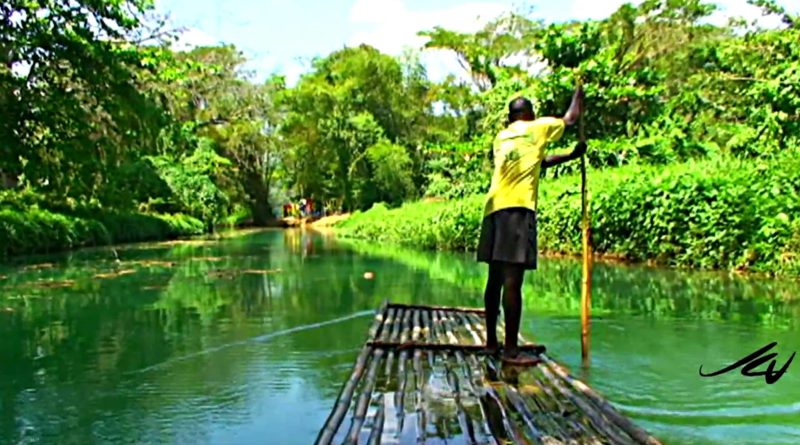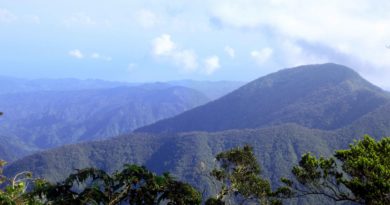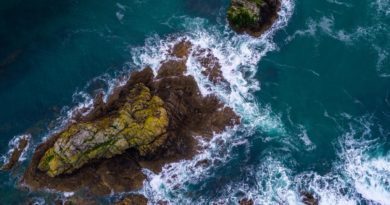Longest River in Jamaica: Interesting Facts
"Many Rivers to Cross" is how renown Jamaican International Singer, Jimmy Cliff would have described Jamaican Rivers. Let us explore Jamaican Rivers together...
Jamaica would not be the same without its rivers. Rivers in Jamaica are plentiful, and can be found in almost every parish. It is no wonder the Amerindians (Tainos) called Jamaica “Xaymaca” which means “land of wood and water”. Jamaica has over 120 main rivers, which all contribute to the water provisions on the island. The longest river in Jamaica start on the mountain slopes, and run in a northerly or southerly direction. One exception to this, is the Plantain Garden River which flows in an easterly direction. Most of the longest river in Jamaica are not navigable except for the Black River and the Milk River.
The Blue Mountains are also the wettest part of Jamaica and give rise to numerous rivers with high stream density. The limestone plateau in the center is characterised by seasonal streams, underground streams, caves, and swallows holes. As a result, rivers are used by locals and tourists alike to carry out daily activities.
The largest river in Jamaica…
The Black River is the largest river in Jamaica and it is located near to low-lying lands with clayey soils in St. Elizabeth. As a result, the soils do not drain easily and usually forms a swamp or morass. The Black River Morass is home for hundreds of species of plant and animal life. In the past, the Black River was used for transporting logwood, but today it is mainly used to irrigate the very dry but fertile Pedro Plains and as a visitor attraction known as ‘The Black River Safari‘
The longest river in Jamaica…
Another river of much significance is the longest river in Jamaica at a length of 92.8km, the Rio Minho. This river was originally called Rio de la Mina (River of the Mine) by the Spaniards who found traces of gold in the sands, and had a small mine at Longville, Clarendon. The Minho River rises in the mountains near to Spaldings, and flows the entire length of the parish of Clarendon, and discharging in the sea at Carlisle Bay.
Other Interesting Jamaican Rivers…
The Rio Grande River is also a large river (34.3km long), located in the parish of Portland. It rises nearly 900m on the northern slopes of the Blue Mountains. The Rio Grande rafting is identified as one of Jamaica’s most popular visitor attraction (see video below).
Moreover, Jamaican Rivers can be quite dangerous during the rainy season, due to their tendencies to rise very high and flow swiftly. As a result, during the rainy season thay can become roaring torrents, tearing away soil and rocks in their upper courses, and damaging crops and properties in their lower reach. Consequently, the Rio Minho River in Clarendon has been known to claim quite a number of lives. Also, the Swift River in Portland had changed its course on one occasion, and this resulted in severe flooding and loss of lives.
Another Jamaican River which has caught public attention is the Rio Cobre in St. Catherine which runs along Bog Walk and exits towards Spanish Town. During periods of heavy rainfall, the Rio Cobre often overlows its banks. Despite this, however, the Rio Cobre River is seen as Jamaica’s most useful river, as it drains the clay basin around Ewarton; provides water to agricultural areas; used to generate electricity and makes a way (path) through the mountains for roads and railways.
List of Top 32 longest river in Jamaica
Here’s a list of the longest rivers in Jamaica by parishes for easy navigation 🙂
- Rio Cobre | St. Catherine
- Ferry River | St. Catherine
- Hope River | Kingston and St. Andrew
- Cane River | Kingston and St. Andrew
- Wag Water | St. Mary
- Dry River | St. Mary
- Rio Nuevo | St. Mary
- White River | forms border between St. Mary and St. Ann
- Dunn’s River | St. Ann
- Roaring River | St. Ann
- Landovery River | St. Ann
- Rio Bueno | between Trelawny and St. Ann
- Plantain Garden River | St. Thomas
- Yallahs River | St. Thomas
- Morant River | St. Thomas
- Rio Grande | Portland
- Swift River | Portland
- Buff Bay River | Portland
- Spanish River | Portland
- Cave River | between St. Ann and Clarendon
- Milk River | Portland
- Rio Minho | Portland (longest river)
- Black River | St. Elizabeth (widest / largest river)
- Ys Tributaries | St. Elizabeth
- Martha Brae River | Trelawny
- The Great River | divides St. James from Hanover and Westmoreland
- Flint River | Hanover
- Orange River | Hanover
- Lucea River | Hanover
- Carbarita River | Westmoreland
- Alligator Hole | Manchester
- Swift River | Manchester
Use of Jamaican Rivers:
- Rivers provide water for domestic use.
- Rivers are used for recreational activities such as swimming, rafting, transportation, and fishing.
- Sand and Stones are taken from our rivers to make buildings.
- Some rivers generate hydroelectric power. Jamaica was one of the first countries in the world outside of the United Kingdom to install a hydroelectricity plant just outside of Spanish Town in the 1890s. Currently there are nine plants ranging from 0.2MW to 6MW with an overall generating capacity of 23 MW installed in Jamaica.
- Some rivers irrigate farm lands. There include the Rio Cobre in St, Catherine, the Rio Minho in Clarendon, the Plantain River in St. Thomas and more.
Main Rivers in Jamaica used for Tourism:
- Rio Grande – Rafting
- Black River – Black River Safari Tour
- Martha Brae – Rafting
- Dunn’s River – Waterfall, swimming, climbing
- The Great River – Boat ride, dinner, dancing
- White River – River tubing, swimming
Jamaican Mineral Springs (Rivers) with Medicinal Value
There are many mineral springs (rivers) in Jamaica. There are valuable medicinal properties in waters of a mineral (spa) capable of curing diseases such as rheumatism, lumbago, arthritis and certain skin ailments. Jamaica’s most popular mineral springs are:
- Milk River in Clarendon
- Bath in St. Thomas
- Rockfort in Kingston
- Black River in St. Elizabeth










Pingback: Manchester in Jamaica - About Jamaica
Pingback: Jamaican Natural Attractions A-Z - About Jamaica